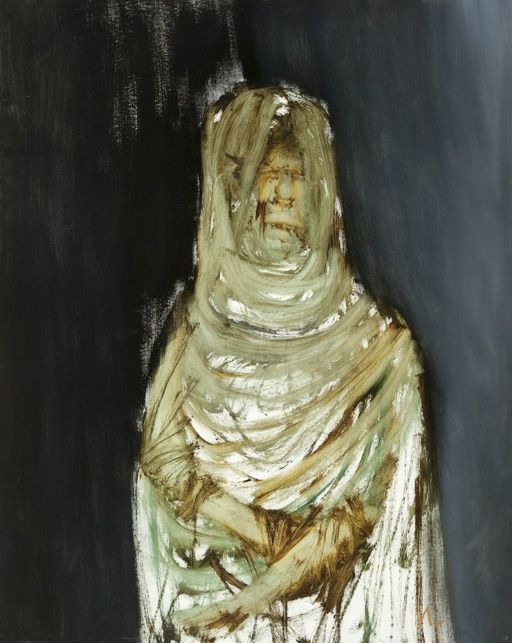

Andrew Turley, 1963
Sidney Nolan, Figure at Harar, 1963, oil on composition board, 151 x 120.5 cm, private collection, © Sidney Nolan Trust
Andrew Turley is a Nolan collector, researcher and writer. Sydney, Australia. Author of "A day-by-day guide to the Adelaide ladies : 59 works by Sidney Nolan - 27 April 1964 to 11 June 1964".
"There are only two works of art that have brought tears to my partner Rachael’s eyes. One was the roof of the Sistine Chapel. ‘Figure at Harar’ was the other.
Emerging from the shadows of Sidney’s ‘African Journey’, the figure may not be pretty but she is powerful. Swathed and roped in a hooded robe, dead centre on a dark butter-rich background, she was published more than any other African work in 1963, appearing in Time magazine, art magazines, newspapers and books. She was also the face of “African Journey” in every major retrospective - Australia, UK, Germany, Stockholm, Dublin, Paris and Chicago – from 1963 until 1978.
Leap forward to 2016 and Rachael and I were so seduced by her, we felt compelled to follow Sidney and Cynthia’s footsteps through the uneven, rubble-walled alleys of Harar, where hyenas once hunted down the sick and dying and still scavenge for butchers’ scraps today.
Ethiopia and the ancient city were the last major leg of Sidney and Cynthia’s African journey – which stretched from early September through to November 1962. Cynthia wrote of the Ethiopian experience “we alternated between being cast down to the depths of human degradation then were faced with such beauty that our spirits soared”.
Harar had been home to Sidney’s poet-hero Rimbaud, and on reaching the city his creative spirit did soar. His imagination was at fever pitch and Cynthia knew it. She wrote, “Sidney also knew exactly what he wanted from this town (Harar), which he had first dreamed about when, as a boy, he was reading both the translation of the poems and those terrible cries of boredom, frustration and pain, Rimbaud’s letters to his mother”.
Proving equal to the task, Sidney wove Rimbaud’s themes of angst, chaos and poverty deep into “Figure at Harar”. He shunned pictorial references used in many of his other Ethiopian works, instead of creating a visual amalgam of Rimbaud’s prose - “in the dives where we used to get drunk, he would cry when he looked at the people around us – poverty’s cattle” - and his own Ethiopian vision - “the men, the women, the children were grey, a combination of unwanted ghosts and lepers clad in grave clothes”.
This painting speaks to me because it is layered with vulnerability, menace and meaning. It is part of two older worlds finding a place in the new. And because, with single-minded clarity, Sidney took exactly what he needed from Harar to lock a pure, mythic presence behind “the cast-iron logic of paint”.